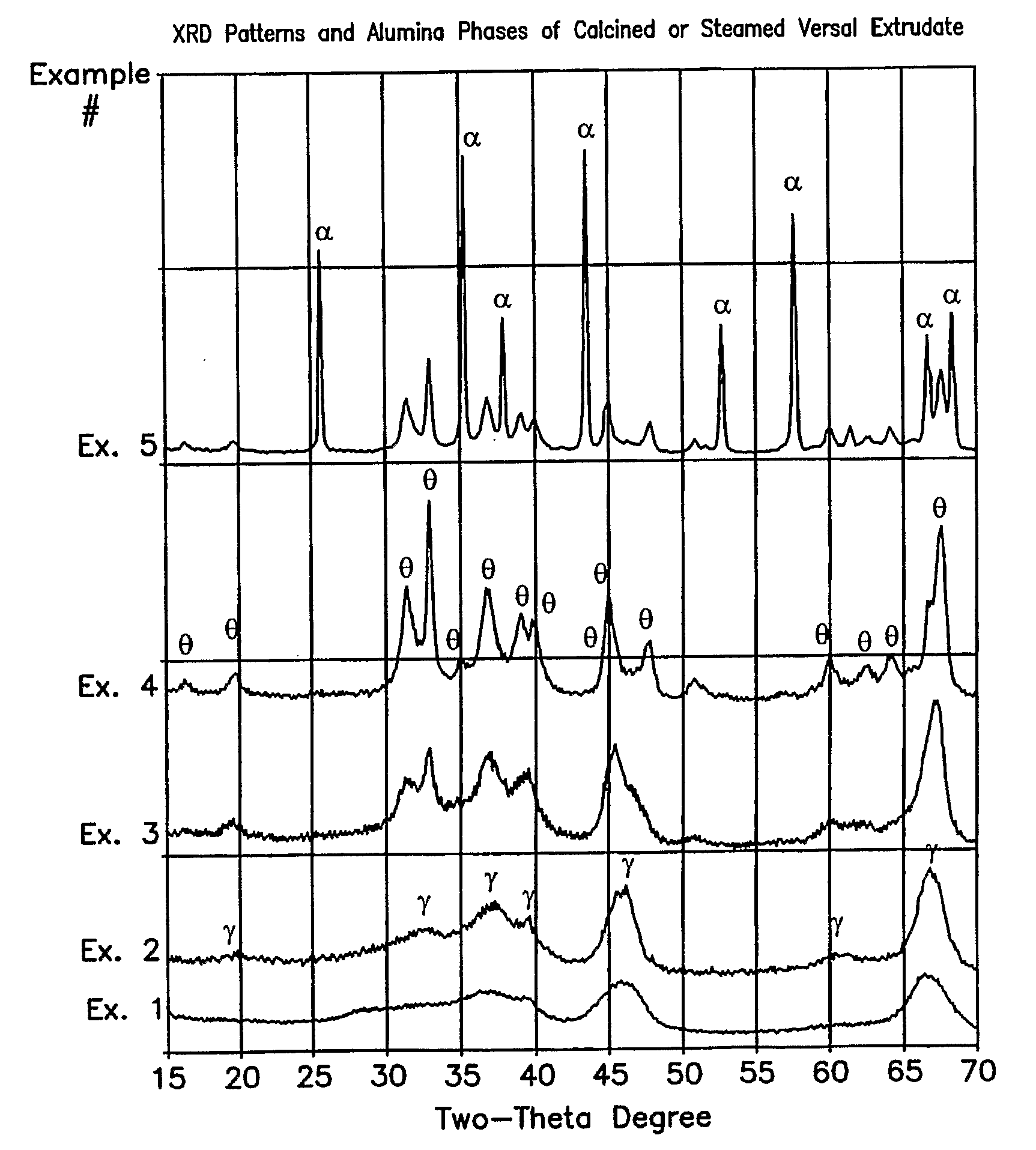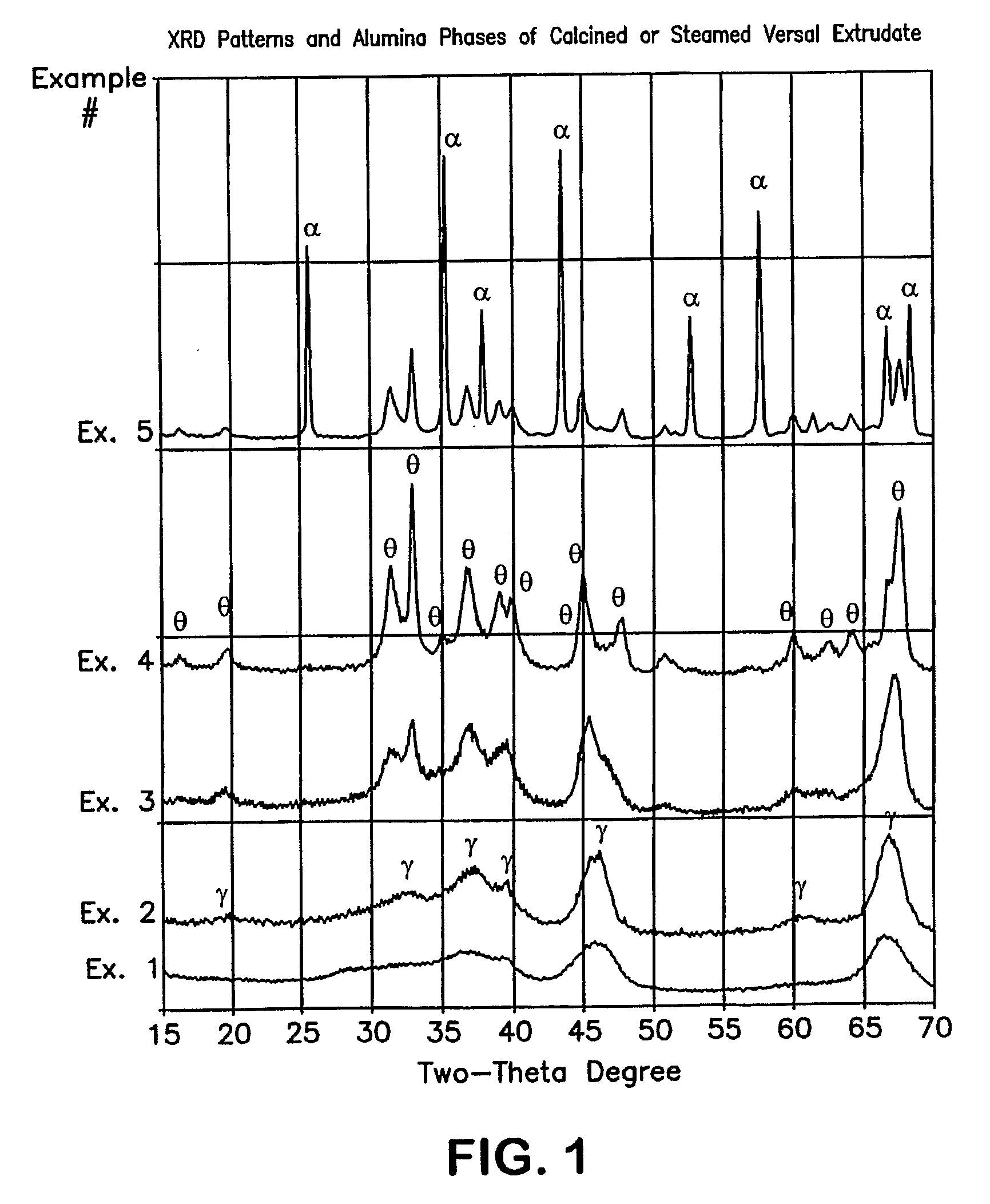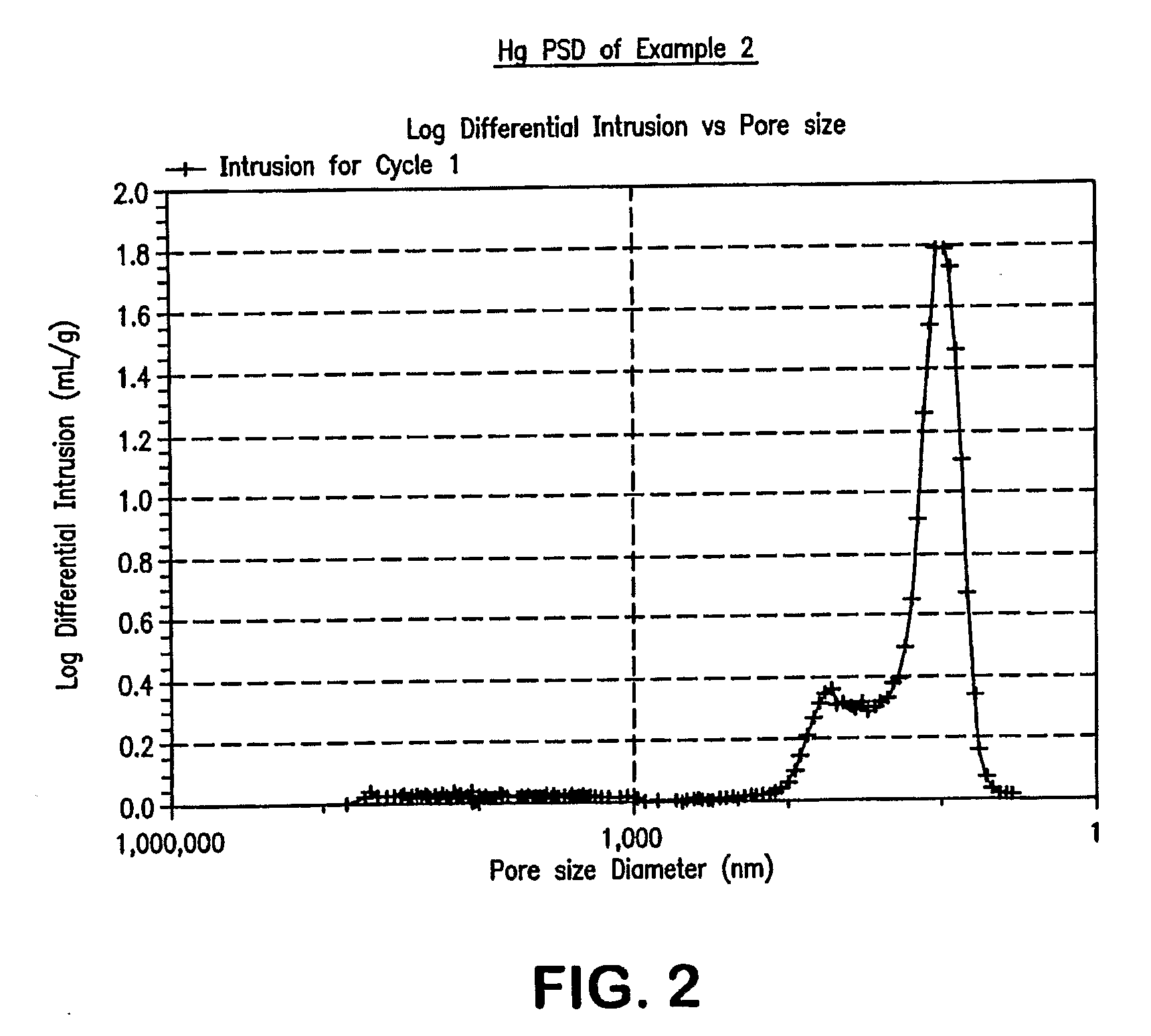Selective Catalysts Having High Temperature Alumina Supports For Naphtha Hydrodesulfurization
a technology of hydrodesulfurization and selective catalysts, which is applied in the direction of organic compounds/hydrides/coordination complexes, physical/chemical process catalysts, hydrocarbon oil treatment products, etc., can solve the problems of significant octane number loss and severe octane number loss, and achieve high hds of the naphtha feed. , the effect of improving the selectivity towards olefin saturation
- Summary
- Abstract
- Description
- Claims
- Application Information
AI Technical Summary
Benefits of technology
Problems solved by technology
Method used
Image
Examples
examples 1 to 5
[0038]An alumina extrudate useful as a support was prepared by mixing Versal-300 (UOP) with 30% Avicel (FMC) as organic filler and 2% HNO3, followed by extrusion through a 1 / 20″ quadrilobed die. The resulting extrudate was calcined using various conditions of temperature, time, and partial steam, to produce alumina supports of Example 1 through Example 5. Specific calcination conditions, alumina phase identifications, BET surface areas by N2, and pore volumes / diameters by Hg, are listed in Table 1. The XRD patterns of these calcined alumina supports are shown in FIG. 1. A copper anode was used. Intensity results are plotted vs. scattering angle (two theta). FIGS. 2 through 5 show the pore size distributions by Hg intrusion for Examples 2, 3, 4, and 5.
TABLE 1MedianMedianPorePoreSupport fromHgDiameterDiameterVersal-300AluminaSA,PV,(by Hg(by HGExam. #AluminaPhasem2 / gcc / gArea)Vol.)SC#1Versal / 400° C. / 1 hrγ (broad)3400.8167941369Calcination2Versal / 800° C. / 8 hrγ (pure)1990.821021261371Calc...
example 6
[0039]A commercial alumina support (Norpro SA31132) containing mixed theta and alpha alumina phases was examined by X-ray diffraction techniques as in Examples 1 through 5. FIG. 6 is a plot of the X-ray diffraction pattern for the support. FIG. 7 is a log-log plot of pore size distribution. FIG. 7 shows the pore size distribution based on HG intrusion volume. The median pore diameter determined based on mercury intrusion volume is 672 Å, while the median pore diameter determined based on pore area is 209 Å. The support has a surface area of 62 m2 / g as measured by N2 BET method, and pore volume of 0.77 cc / g as measured by Hg (ASTM-D4284 method). An impregnation solution was prepared by dissolving 8.34 g of urea and 4.20 g of citric acid monohydrate in 10 ml of water, followed by dissolving 2.13 g of cobalt carbonate hydrate (46.2% Co) and 6.13 g of ammonium heptamolybdate. The impregnation solution was added to the alumina support using the incipient wetness impregnation technique. T...
examples 7-11
[0040]The alumina supports of Examples 1-5 were impregnated with Co and Mo salts using citric acid and urea as organic additives. Impregnation and drying was carried out as described in Example 6. Table 2 lists the metal content of the dry catalyst precursors.
TABLE 2Support fromExample #Example #Support SC#MoO3CoO71136918.14.582137119.64.993137316.84.2104137517.54.4115137815.53.9
PUM
| Property | Measurement | Unit |
|---|---|---|
| temperature | aaaaa | aaaaa |
| temperature | aaaaa | aaaaa |
| temperatures | aaaaa | aaaaa |
Abstract
Description
Claims
Application Information
 Login to View More
Login to View More - R&D
- Intellectual Property
- Life Sciences
- Materials
- Tech Scout
- Unparalleled Data Quality
- Higher Quality Content
- 60% Fewer Hallucinations
Browse by: Latest US Patents, China's latest patents, Technical Efficacy Thesaurus, Application Domain, Technology Topic, Popular Technical Reports.
© 2025 PatSnap. All rights reserved.Legal|Privacy policy|Modern Slavery Act Transparency Statement|Sitemap|About US| Contact US: help@patsnap.com



